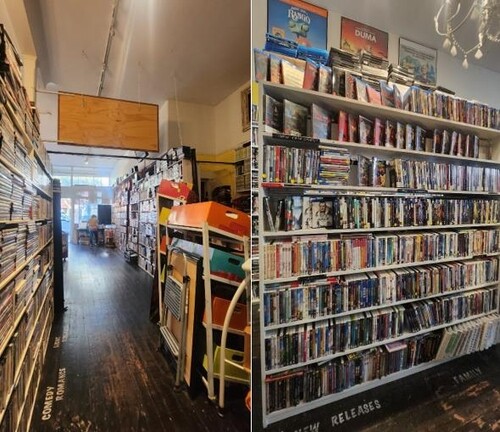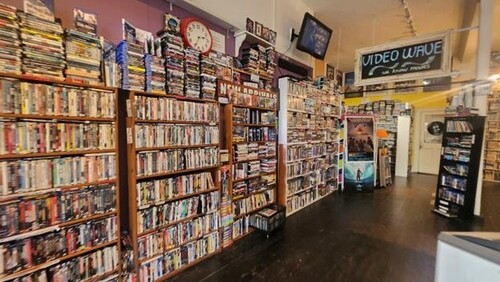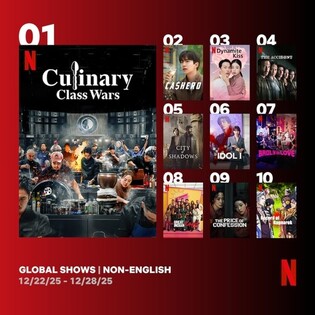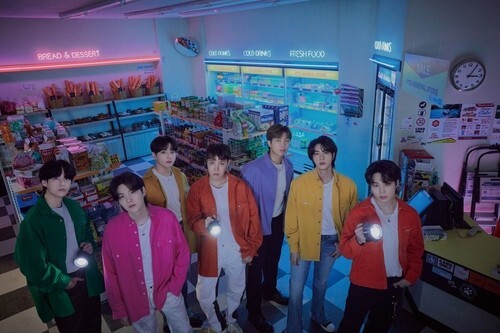*Editor’s note: K-VIBE invites experts from various K-culture sectors to share their extraordinary discovery about the Korean culture.
Scrutinizing AI: Coexistence of AI and Analogue Arts (Part 1)
Contributed by Lee Eun-jun (professor at Kyungil University)

Recently, I discovered a store in San Francisco that still rents DVDs and VHS tapes. This store deals with both classic films and recent works on DVD and VHS tapes.
VHS tapes, introduced in the late 1970s and early 1980s, were the most widely used format for home video recorders (VCRs) at the time. VHS stands for "Video Home System," and as the name suggests, it became a widely popular home video system.
It was used for recording television broadcasts or watching movies and TV programs at home. For over 30 years, VHS tapes were the primary form of video content consumption, and the culture of renting VHS tapes from video rental stores became one of the iconic features of that era.
 |
| ▲ This image provided by the author shows "Video Wave," a DVD and VHS tape store she visited in San Francisco. (Yonhap) |
VHS tapes had their own technical limitations and unique characteristics. Compared to today’s high-resolution digital video, VHS image quality was relatively low, and the tapes often experienced glitches or interruptions.
These physical limitations contributed to the unique charm of VHS tapes. The frequent occurrences of "blurry images," "noise," and "scratches" in VHS videos evoked an analog nostalgia, becoming an element that triggered longing for the past.
These characteristics often aligned with the appeal of films or programs of that time, creating a unique emotional experience. I also have memories of renting VHS tapes with my whole family during my childhood.
The VHS video store I encountered in San Francisco warmed my heart. I vividly recalled the scenes of sitting together in the living room with my family, carefully selecting a movie and eagerly watching it.
 |
| ▲ This image provided by the author shows "Video Wave," a DVD and VHS tape store she visited in San Francisco. (Yonhap) |
DVDs (Digital Video Discs) emerged in the mid-1990s and replaced VHS tapes. They brought an innovative change to video media at the time. DVDs were particularly known for their excellent image and sound quality and large storage capacity, offering a new experience of enjoying movies and TV shows at home with better quality.
Unlike VHS tapes, DVDs stored and processed data digitally, ensuring that video quality did not degrade and played stably without physical damage or texture changes over time.
However, DVDs too were quickly overtaken by new technologies as time passed. Compared to high-resolution formats like Blu-ray, DVDs had clear limitations in image quality and storage capacity. As digital streaming services such as IPTV emerged, DVDs gradually began to disappear.
 |
| ▲ This image provided by the author shows "Video Wave," a DVD and VHS tape store she visited in San Francisco. (Yonhap) |
Streaming services allowed consumers to watch movies and TV programs in real time with just an internet connection, offering a more convenient choice. This change drastically reduced the demand for DVDs. As a result, DVDs faced new challenges, unable to fulfill the role of physical media in the modern era.
During conversations with store owners and customers in several music and movie shops in San Francisco, I discovered something new. Many people still recognized DVDs and VHS tapes as media with significant cultural value.
In particular, for movie enthusiasts, DVDs and VHS tapes hold more meaning than simply being a medium for video content.
The cover art, internal design, and extra content of DVDs and VHS tapes are important collector’s items for movie fans. Collectors archive old DVDs or passionately search for limited edition DVDs to add to their collections.
 |
| ▲ VHS error screen, captured from YouTube. (PHOTO NOT FOR SALE) (Yonhap) |
Special edition DVDs or VHS tapes from renowned directors, as part of their unique collections, tend to increase in value over time, serving as cultural artifacts with intrinsic worth. This collecting culture shows that DVDs are now seen as more than just viewing media, but as "cultural items."
VHS tapes and DVDs serve as crucial links that transcend the boundaries between analog and digital, high resolution and collectible value, continuing to provide both artistic value and cultural significance in the digital age.
They evoke nostalgia for physical media while also providing an opportunity to witness the evolution and transformation of film and video art all at once.
VHS also played a significant role in video art and experimental cinema. In the 1990s and early 2000s, VHS tapes were used by many artists as an experimental medium, embracing the unique texture and damaged feel as part of their works.
Many artists used the physical properties of VHS tapes to intentionally create distorted images or produce video art. Such works allowed for unique expressions that were difficult to achieve with digital technology at the time.
 |
| ▲ SNSD Hyoyeon's "retro romance," provided by SM Entertainment. (PHOTO NOT FOR SALE) (Yonhap) |
In particular, the key feature of VHS video art lies in its intense analog characteristics. Using VHS, artists could achieve aesthetic effects through natural errors such as screen distortion, color changes, and noise.
These aesthetic elements, which may unintentionally be removed in some digital formats, provide a unique visual experience that can only be found in VHS.
The resurgence of VHS tapes is particularly active among the Millennial and Gen Z generations. The MZ generation now views VHS tapes not as mere relics of a bygone era but as a cultural icon that reflects on the past.
VHS tapes have now become part of the "retro" trend in and of themselves. There are attempts to collect them or transform them into art.
For instance, some projects involve converting classic movies or TV dramas on VHS tapes into new digital formats and artistically reinterpreting that conversion process.
In this way, VHS tapes have become more than just a medium holding memories of their time, but have emerged as cultural symbols. (To be continued)
(C) Yonhap News Agency. All Rights Reserved































